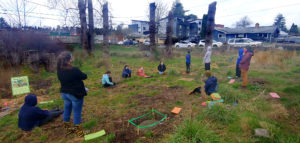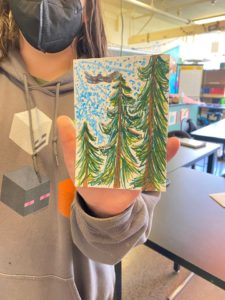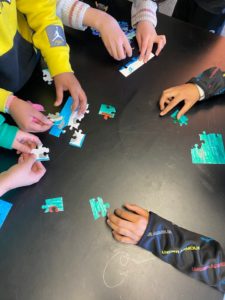A Work in Progress
After 5 Years, DNDA’s Programming at Delridge Wetland Park Continues to Evolve

The fifth-graders from teacher Sunny Graves’ classroom were doing a split session, first participating in a classroom art activity led by DNDA staff and then visiting the wetland. Arrayed in a circle on the perimeter of the wetland, the students got a refresher course on food webs and the roles of producers (who capture solar energy through photosynthesis), consumers (who get energy by eating other lifeforms), and decomposers (who get energy from eating dead lifeforms). They played a game that illustrated the movement of energy, and which looked a bit like tag.
Bri Castilleja, DNDA’s environmental education coordinator, said the programming has evolved as students have returned to the classroom after two pandemic-disrupted and largely remote years. Castilleja explained that some students are struggling with a return to the classroom and benefit from a chance to blow off steam.
In the past, students would visit the park repeatedly over multiple years but now it is a new place for most of the kids. Regular visits help build familiarity and their connection to the wetland. A week after the visit by Graves’ classroom, a group of fourth-graders with teacher Beth Mahrt built makeshift tents and shelters. It was a follow-up to a classroom lesson on weaving cattail mats, a practice of many Coast Salish people (including local tribes such as the Duwamish, Suquamish and Muckleshoot) that produced hardy mats that served a variety of purposes.
“The most important thing right now is meeting them where they are at,” Castilleja said.


